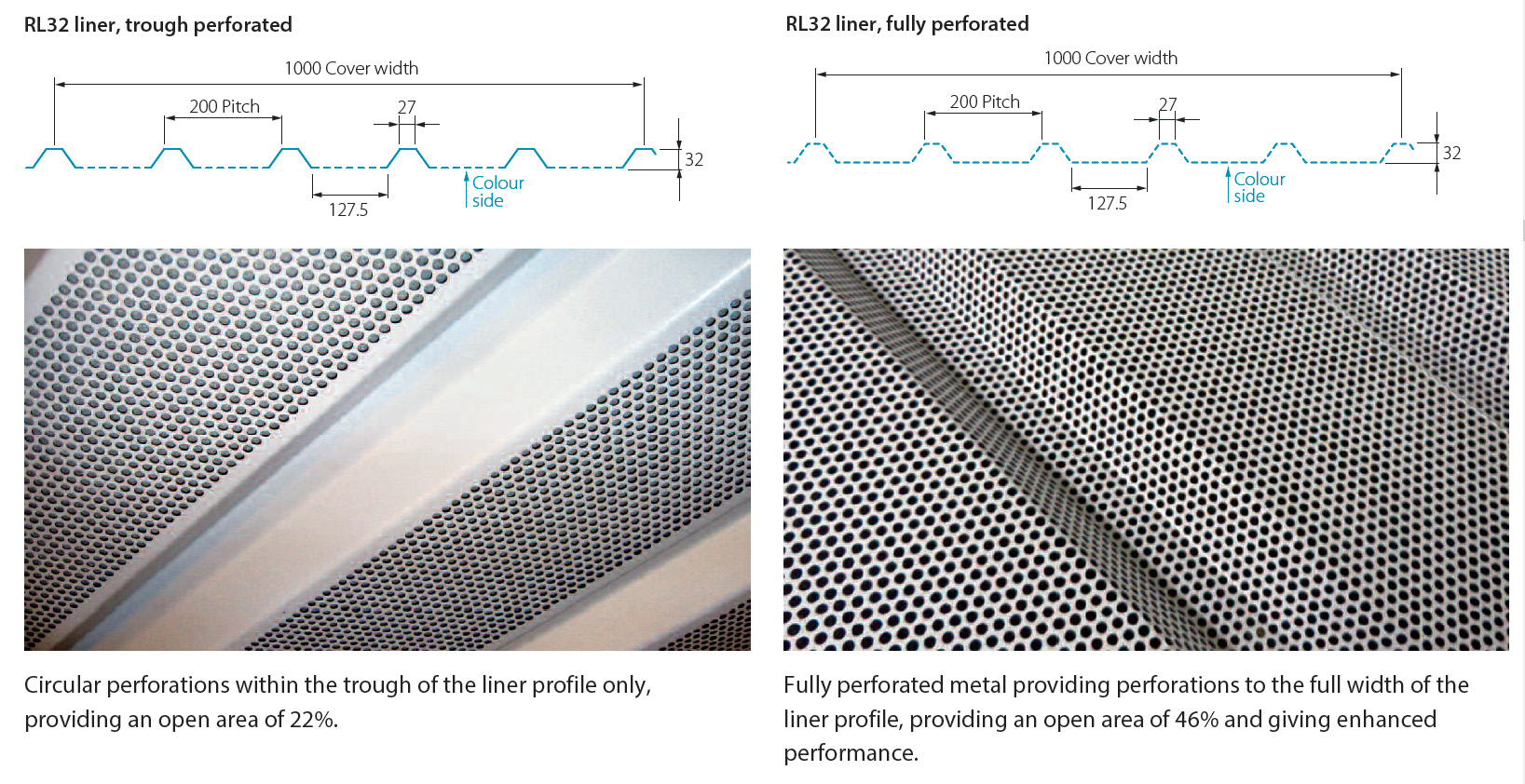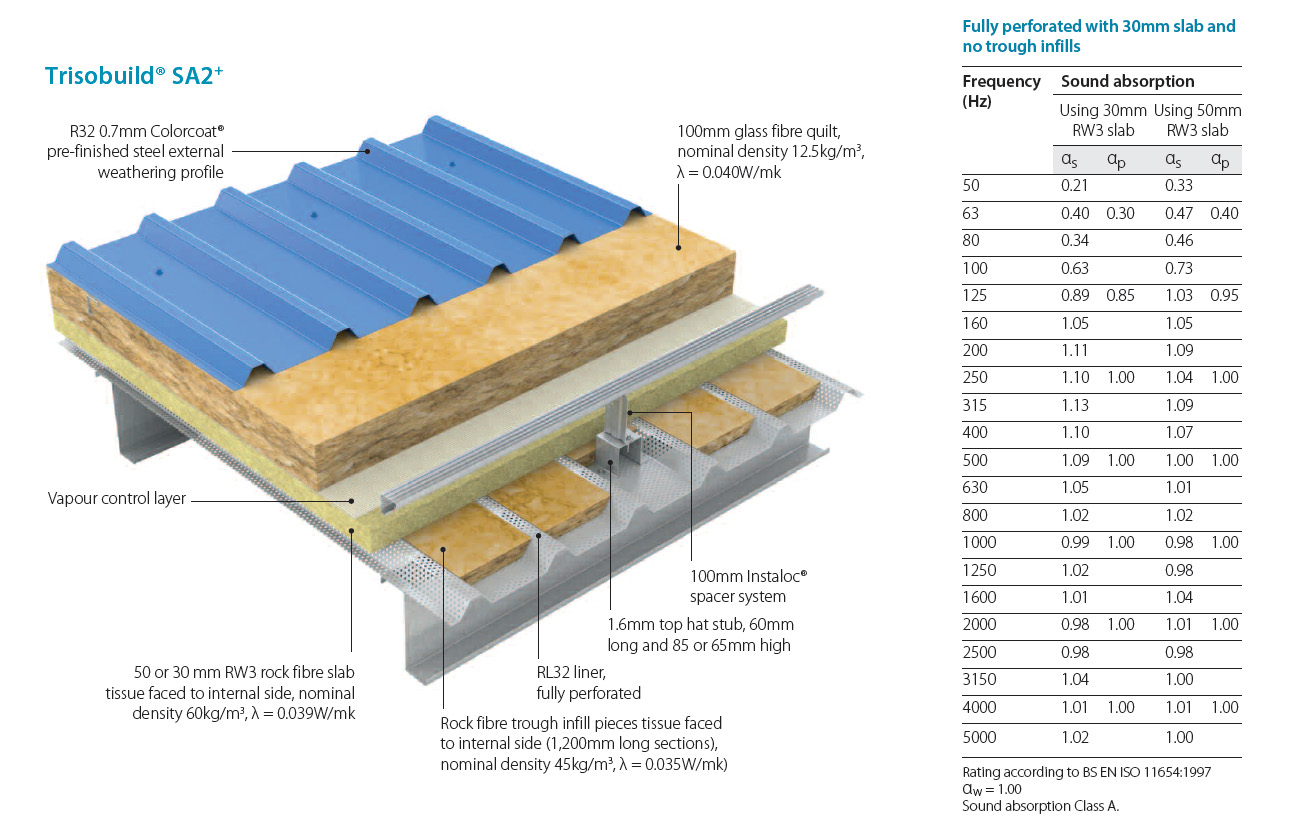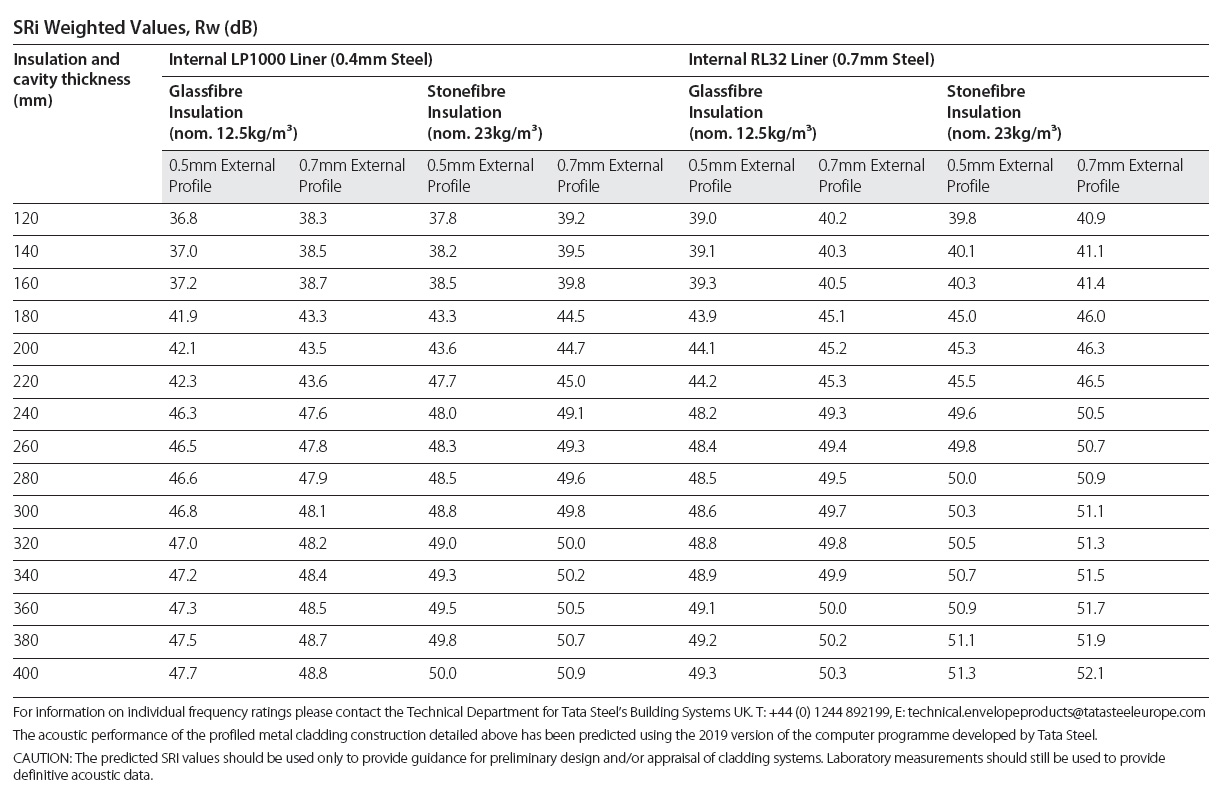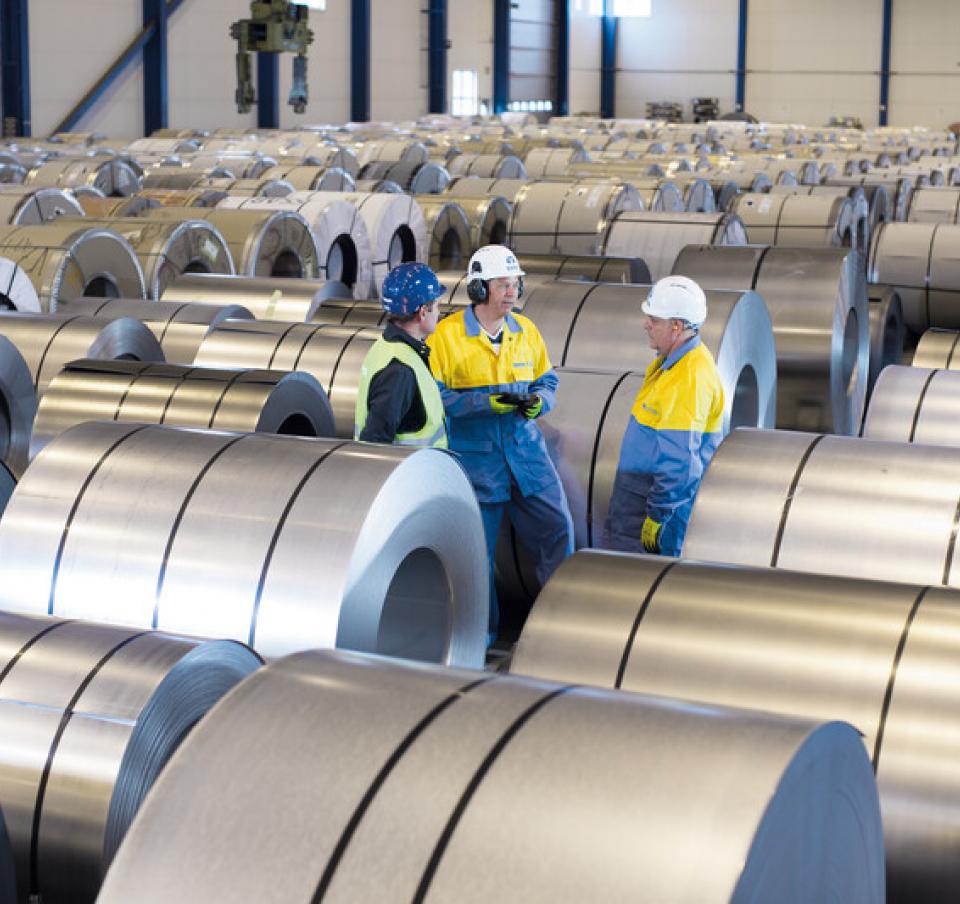The acoustic performance of an envelope roof and wall system is a key building design consideration in controlling both the noise within the building environment, and external noise pollution.
We evaluate the acoustic performance of a product through its control of two different factors: sound absorption and sound reduction.
Sound absorption is assessed by measuring how much sound a product absorbs across the frequency range 50Hz to 5000Hz. The result is noted as a coefficient where 1.0 is a perfect absorber of sound and 0.0 is a total reflection of the sound. Materials are awarded a class rating of A-E for their performance under the international standard EN ISO 11654, where class A has the highest absorption.
Sound absorption is achieved within the Trisobuild® systems by perforating the RL32 liner with a specified hole pattern that is either fully perforated or trough perforated. The holes absorb the sound and reduce the amount of sound reflection. To further assist in sound absorption, dense insulation is placed behind the perforations and as an additional option, insulation can also be installed in the troughs of the RL32 profile.

We have four tested system types in the Trisobuild® systems range: SA1, SA1+, SA2 & SA2+. The trough perforated liner in the SA1 type, without trough infills has a Class C sound absorption level. Adding trough infills to make it an SA1+ system produces an improved Class B rating. Type SA2, where the fully perforated liner is used has test data for a 30mm or 50mm rock fibre layer. The 50mm layer shows a slightly improved lower frequency absorption over the 30mm rock fibre layer but both are designated Class A sound absorption.This result is mirrored with the SA2+ trough infill option.

Sound reduction relies on creating a sealed system with good insulation, which in turn relies on the mass of the materials and damping control. The test frequency range used to measure performance in this area is 100Hz to 3150Hz and a weighted curve is used to give us a single figure guide to the system performance. The higher the figure, the better the sound reduction performance.
We have predicted the acoustic performance of the Trisobuild® constructions detailed below using the 2019 version of the computer programme developed by Tata Steel.

Please contact our Technical Department for further details, or use our online specification tool to create the right specification to generate the acoustic performance required for your project. This will provide assurance that cladding components are compatible and perform together as a system.
Download our brochure for more information on all our Trisobuild® systems



































































































































































































































